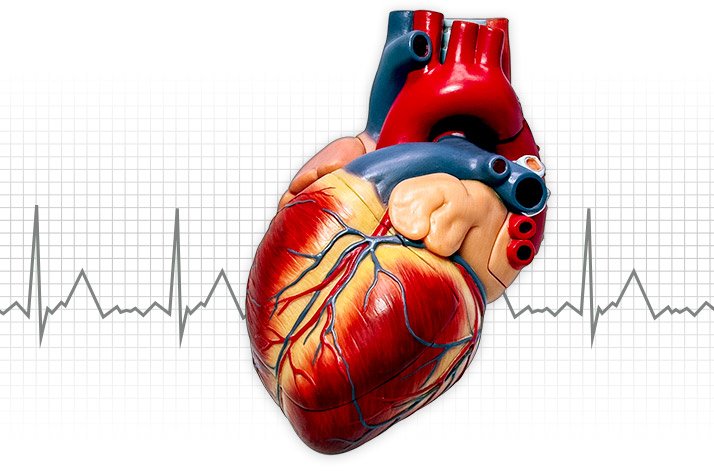
3 Reasons To Include Cardio In Your Lifting Program
Some people say cardio kills your gains, but they may not be performing an appropriate amount or type of cardio. Learn how to use cardio effectively to build more muscle over time!
There are two kinds of people in this world: those who hate cardio and believe it causes a loss of "gains," and those who understand the positive impact the right type of cardio can have on said gains. I'm firmly in the pro-cardio camp, because if properly structured and implemented, I believe cardio has a place in any lifting program.
Nobody is ever going to argue that you need to start doing hours of cardio for days to become a better lifter—lifting obviously comes first and foremost. When used alone, cardio contributes very little to building lean, muscular, or athletic-looking bodies. But when combined with proper lifting and the right frequency—as little as a few short cardio sessions each week!—it could be exactly what you're looking for to make better gains.
In fact, properly implemented steady-state cardio can make you a better lifter, even if your goal is getting more muscular and strong.
An Efficient Heart Is a Stronger Heart
If you lift weights in a circuit style, go to CrossFit classes, or do high-intensity interval training (HIIT), you may think you're getting a more efficient, modified form of "cardio" and eliciting the same effects as a long, slow run. Not so fast.
While HIIT is an awesome way to burn through a ton of calories compared to steady-state cardio—and I do love putting together a nasty circuit to knock out in 20 minutes when I'm crunched for time—those short yet intense circuit sessions don't necessarily train the cardiovascular system in the way we think.

One of the most important adaptations from frequent aerobic exercise is a thing called stroke volume, which is defined by how much blood is pushed out of your left ventricle (one of the heart's chambers) during cardiovascular work. If your heart can deliver more blood with less work, you've got a serious advantage, and you can gain it from steady-state cardio.
In order to improve stroke volume, the left ventricle must grow bigger to allow more blood to fill it and subsequently get pumped out. Long, slow bouts of cardio—like running and using the stair climber or the elliptical—can help. On the other hand, circuit training is less effective for improving stroke volume because the intensity and duration of those sessions generally avoid the aerobic zone, which is necessary for adaptations to take place.
And to be clear, steady-state cardio should be performed in the aerobic zone, where you can easily run and talk at the same time. For most people, this means that their heart rate is going to be somewhere between 120-150 beats per minute.
Remember that this aerobic zone is the sweet spot for bringing about improvements in your cardiovascular system, which can translate into better muscular gains overtime.
Cardio: It Does Your Blood Vessels Good
Just as peanut butter needs jelly, a high-functioning heart needs a network of capillaries to make the perfect tag team. Performing steady-state cardio helps add more capillaries to the muscle tissue than lifting alone.

This is a big deal for two reasons:
- Your muscle tissue gains the capacity to perform at a higher level, thanks to being able to receive more oxygen and nutrients.
- Your muscle tissue is able to recover more quickly, because it is also able to clear metabolites and waste products faster.
This enhanced ability to recover is crucial, especially for lifters who do high-intensity training sessions like CrossFit very frequently.
More Cardio Helps You Do More Work Overall
If you compare a lifter who moves a total of eight high-quality sets against another lifter who moves only six high-quality sets, the greater work capacity of the former lifter will help him accrue more volume—and thus potentially more gains—over the course of a year.
The key here is work capacity, or simply the ability to perform more work within a given time period. This is crucial if you're looking to build more size or strength, because the ability to perform eight quality sets of squats instead of six can mean an extra 1,000 pounds of additional work moved in your training session!

What's the best way to build general work capacity and, in turn, a lifter's general physical preparedness (GPP), you ask? I'm starting to sound like a broken record here, but the answer is steady-state cardio.
Put simply, a lifter who has better GPP has more potential to get in productive training sessions more frequently over the course of a year.
After 3-4 years of this training, this can mean a massive difference in gains between a lifter who has developed their GPP and a lifter who hasn't.
How Much Cardio Should You Do?
For most lifters, 3-4 cardio sessions per week at 30 minutes a pop in the aerobic zone are all you need to elicit beneficial physiological adaptations. When properly structured with your lifting split, these sessions shouldn't impact you short-term performance, either. Give cardio a chance before dismissing it—it could translate into gains on gains on gains.
